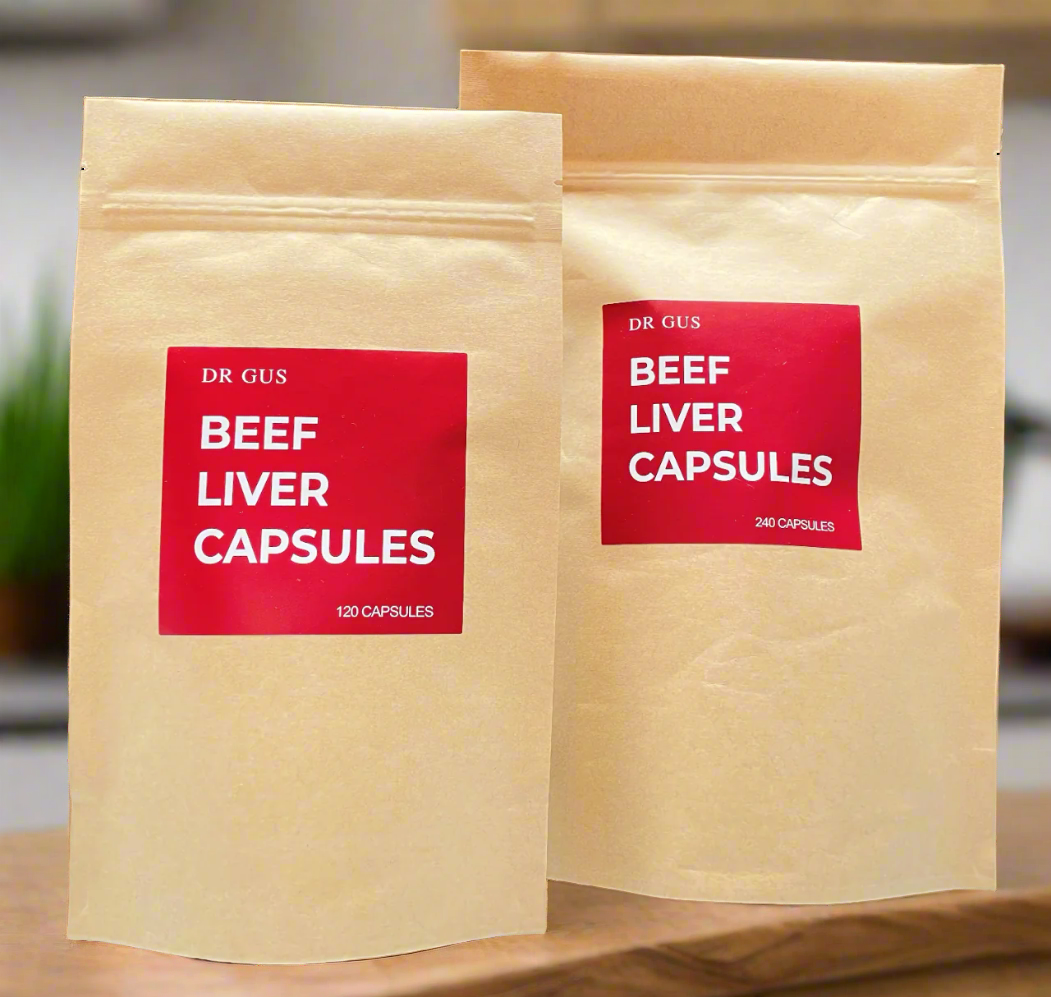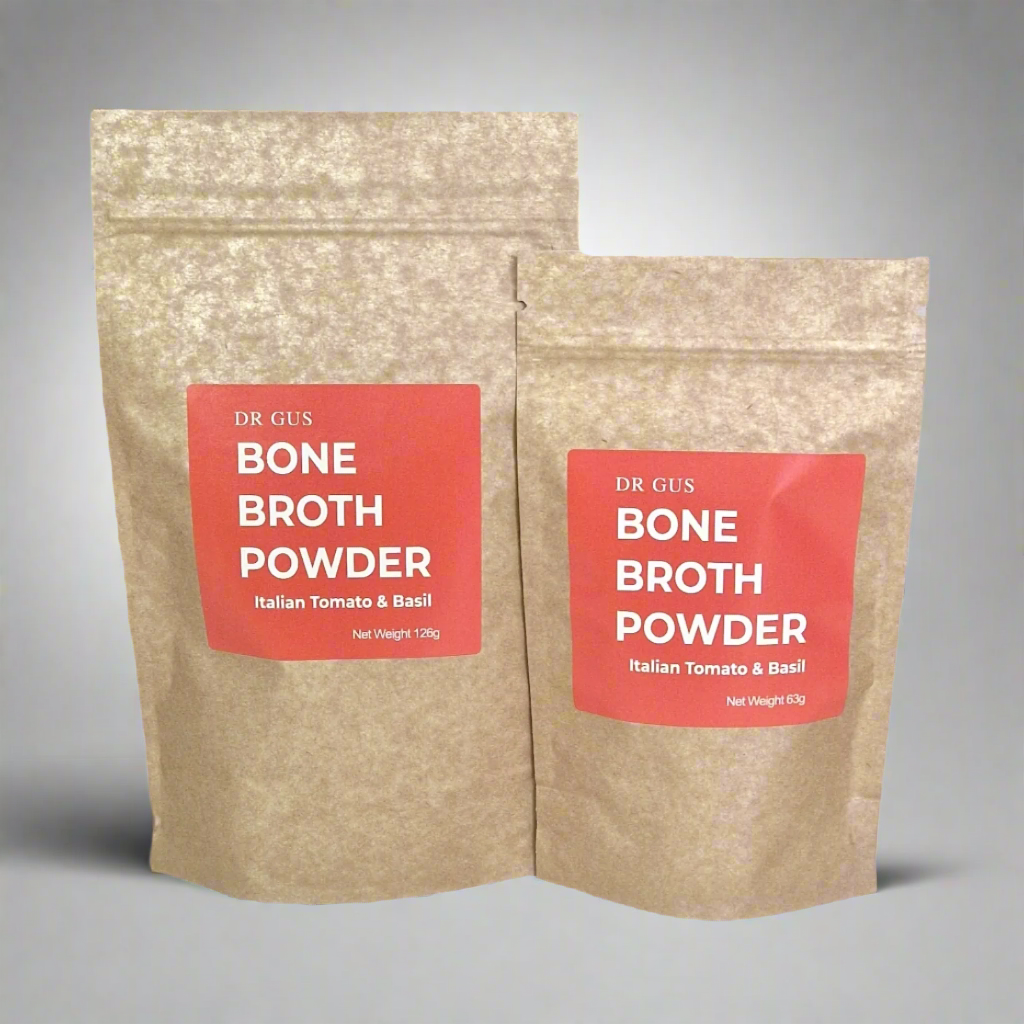What to look for in a good bone broth
April 20, 2020 5 min read
We get asked a lot about what to look for when shopping for bone broth. So we decided to summarise those answers in a blog article that everyone can refer to.
Cost: Too cheap... Or too expensive?
Proper bone broth is not quick or easy to make. The process is labour intensive and is more complicated than some recipes suggest. As an initial guide to help identify fake or watered-down broths, if it’s cheap, then it’s probably not the real thing, or it’s been heavily watered-down and you won’t get the benefits. A very expensive broth suggests that it’s been made with (expensive) additives, or the company are just trying to make money off the growing trend for broth bone consumption. A quality bone broth should probably cost in the region of £12-£18 per litre when made as per instructions.
Additives: Bone broth protein, bone broth collagen, MSG
After assessing the cost of the broth, now check the ingredients list for things that shouldn’t be added to a quality broth. Check for ‘Bone broth protein’ or ‘bone broth collagen’ as a listed ingredient. If these are listed as ingredients, it suggests that the broth is not genuine bone broth, but rather a weak stock that is then fortified with a mass-produced collagen protein. So, although it looks legit, it isn’t actually real bone broth, it’s more like a factory made quick mock up being passed off as bone broth. The reasons why this is not good practise is that the finished product will be missing other components of broth such as minerals such as salt and calcium and glycosaminoglycans such as glucosamine and hyaluronic acid.
Also check the ingredients list to make sure it doesn’t contain anything that is difficult to pronounce or that you haven’t heard of, as most of those additives are flavour enhancers like MSG or preservatives to save cost on proper packaging.
The bone broth recipe has remained the same for thousands of years, because this leads to an optimal product fit for human health. Fake broths are being sold for the same price as properly produced bone broth, so check for price and ingredients to ensure you’re losing on quality.
What bones have been used: Grass-fed, grass-finished, organic, pastured...?
After checking price and ingredients, now you can start to be more technical in your search for a worthy broth. Look for what bones were used in making the broth, and from which animals. We recommend getting a mix of beef and chicken bones, as combining bones from different animals is gives a wider range of the different types of collagen. How the animals were raised is also really important. Were they raised in a pasture, living as nature intended or in a factory farmed with limited access to the great outdoors? When farming is done well, the farmers and produce sellers are more than happy to show you how they do things. If they don’t advertise concepts like pasture raised, grass fed, organic or biodynamic, then something is probably amiss.
Factory farmed collagen can host nasties like pesticides and heavy metals. So, broth from animals raised in this way is especially bad. See one of our previous blogs for more details here (https://www.drgusnutrition.co.uk/blogs/blog/where-the-bones-are-from-for-bone-broth-is-important).
Collagen Content
The main nutrient we gain from drinking bone is collagen. A broth low in collagen may indicate that the production process was not the gold-standard and corners might be being cut to generate more quantities of broth but at a lower quality. Not all companies tell you on the packaging how much collagen is in their broth, but you can find out by looking at protein levels on the nutrition label. Check that the collagen content per serving is at least 3g and preferably above 5g, as 5g is minimum daily amount we need for general health, and certainly before exercise for cartilage production. This also helps to find out which companies aren’t being honest, as you might need to drink over 200ml per day to reach these values, which gets very expensive. Cost per 5g serving of collagen protein should be no more than £3.
Broth consistency: Does it gel?
A quality made broth should always gel when you put it in the fridge for a day or so. Gelatin makes the broth gel, and gelatin definitely contains collagen peptides (peptides are chains of amino acids). If the broth doesn’t gel either the gel doesn’t contain any collagen or the broth has been so over-processed that the gelatin has been broken down either into collagen or the amino acids. This is important as collagen does things in the body that the basic amino acids don’t do such as lower blood pressure and stimulate tissue repair. If a broth doesn’t gel, it doesn’t necessarily mean there’s no collagen in it, but a broth that does gel is guaranteed to have collagen peptides.
Make sure it’s fresh
There’s advice on all food labels that suggests how quickly you should consume something after opening it. This is because when you open the packet, bacteria can get it and start to downgrade the quality of whatever food it is.
The minute you open your packet of broth, bacteria will get inside the packaging and begin to colonise the broth, consuming nutrients and breaking down the product. Don’t worry; these bacteria won’t make you unwell, but they will compromise the quality of your broth.
Something call oxidisation also happens, which is when exposure to oxygen spoils food. This causes mould and staleness: It’s why bread is kept in a sealed bag on supermarket shelves, and why when we get it home and open it, we store it in a bread bin or wrapped in packaging to keep it fresher for longer and minimise the damage from oxidisation.
Oxidisation damages the nutritional quality of the broth. So, as each day passes your broth becomes less and less nutritious. This is the main reason we freeze-dry our broth, its one way of maintaining nutrition without having to worry about it going off or becoming less nutritious.
Taste
Finally, taste is very important. If producers care enough about making something that tastes delicious, they are probably also dedicated enough to care about how the broth is made. Taste probably has a relationship to health in terms of the nutrients we need. Good broth tastes good!
As a side warning, beware of sweetness. So much sugar is added to foods nowadays, that our taste-buds expect sweetness in foods not traditionally associated with sugar. A good experiment you can do is to look at the ingredients on savoury foods (e.g., dips, some cheeses and even bread and raw chicken) and look for added sugar. Food manufacturers are very clever in disguising added sugar, using (perfectly legal!) names for sugar such as dextrose or maltose. A good rule is that if you find a word in the ingredients list that ends in ‘-ose’, it’s added sugar (look for the two mentioned above, and, also sucrose and glucose). Avoid broths that have added sugar in them. A good bone broth does not need sugar. It should taste rich, feel silky on the tongue, due to the gelatin, and strong in the umami taste.
If you have any further questions about our bone broth products, or if bone broth can help you, we’d love to hear from you. Contact us here.
Any questions or comments we would love to read them below.
Leave a comment
Comments will be approved before showing up.




